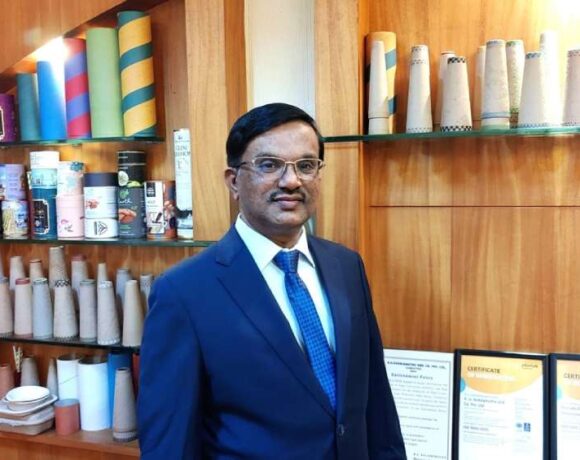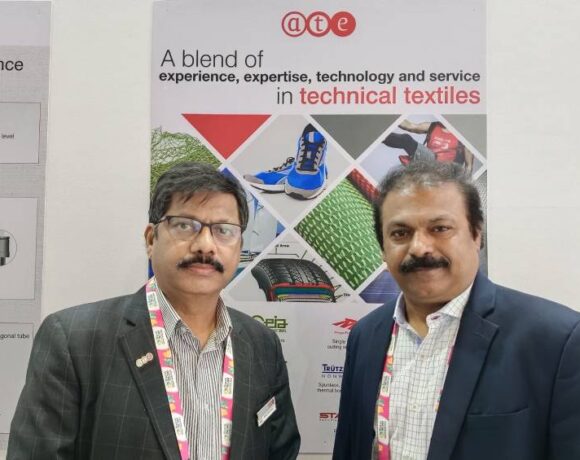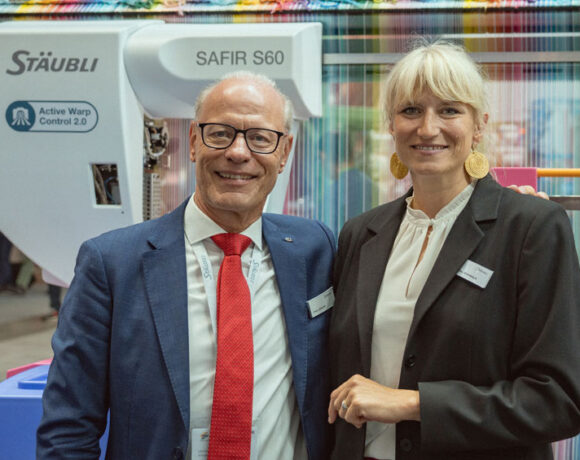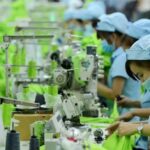‘Indian Manufacturers Are Increasingly Prioritizing Sustainability’
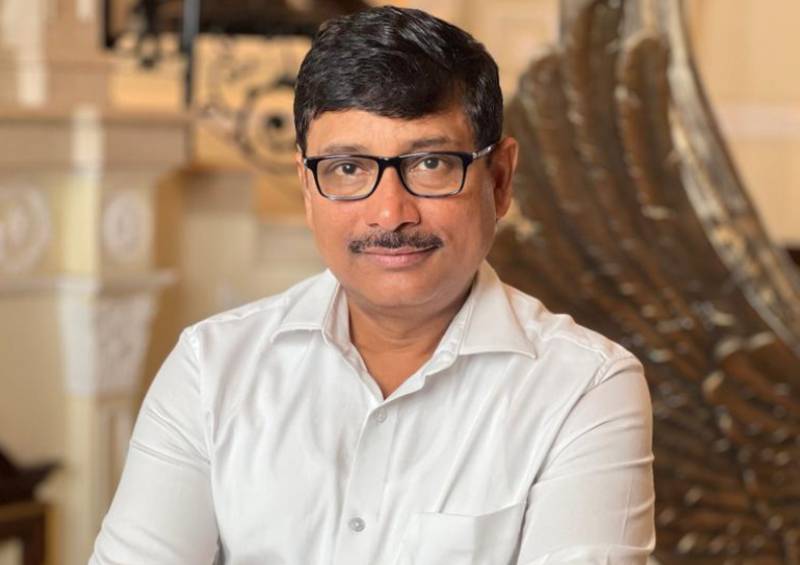
The textile industry in India is making significant strides towards building a sustainable base, driven by the need to meet international demands and the growing recognition of sustainability as essential for future growth, says Pradip Roy in conversation with Henry Dsouza, Associate Editor of Textile Insights.
In the face of economic uncertainties and geopolitical tensions, how resilient is the Indian and global textile machinery industry? What strategies are being employed to safeguard against economic downturns?
The textile machinery industry has faced a decline in sales by about 25 to 30 per cent over the past 3-4 months. To address this, the industry is employing several strategies.
Firstly, manufacturers are focusing on reviving existing pending orders, reaching out to customers who had already planned their purchases and encouraging them to proceed with their deliveries. This is crucial, as many customers have already invested in the necessary infrastructure.
Secondly, there is a push towards modernization. Many machines in India are outdated, often more than 15-20 years old, and manufacturers are recommending to modernize those machines to improve their operational efficiencies and also promoting upgrades to meet new quality and technology standards while improving energy efficiency.
Finally, there are positive signs in the market, such as the stabilization of cotton prices, improvement in the utilization levels of mills which are currently at 80-85%, indicating a potential for recovery. Enquiry levels for new machines has improved for Modernization as well as capacity enhancement
What steps are being taken to enhance supply chain resilience in the textile machinery industry, particularly in the light of recent global disruptions?
In response to recent global disruptions, the textile machinery industry is implementing several measures to enhance supply chain resilience. Last year, the industry faced significant challenges, particularly with the availability of mechatronics components. To address this, manufacturers are diversifying their supplier base by establishing relationships with multiple alternative suppliers, reducing dependence on a single source.
Additionally, there is a concerted effort to develop indigenous manufacturers who can provide critical components in times of need. The industry is also adopting technology-driven approaches, such as implementing Theory of Constraints (TOC) in the supply chain to improve efficiency and responsiveness. These proactive steps aim to mitigate future disruptions and ensure a more robust and resilient supply chain.
How have been the recent government policies such as Atmanirbhar Bharat, PLI Scheme and PM MITRA Park impacting the demand for the textile industry in India?
Regarding the PLI Scheme, I believe it needs to be reassessed in the context of textiles. The current scheme requires high investment levels, which limits its accessibility to limited investors. A revised scheme with a lower investment threshold would likely encourage broader participation and adoption.
As for the PM MITRA Parks, there has been a lot of discussion and initial activity, which has translated to a positive sentiment surrounding these parks, and their potential impact is being eagerly anticipated.
Overall, there’s growing enthusiasm about the PM MITRA Parks and the PLI Scheme. These initiatives have the potential to transform the industry and shift the mindset of stakeholders who have been struggling over the past year. Additionally, the government is reportedly working on a new textile policy, which could further support industry growth.
The government’s goal to triple textile exports from US$ 35 billion to US$ 100 billion highlights its assurance of stimulating the sector. If these policies and incentives are effectively implemented, they could significantly boost the industry’s growth and demand in the future.
Do you think India will be able to meet the government’s export target of US$ 100 billion?
Absolutely, India has the potential to meet this target. Given our capabilities, there’s no reason we can’t aim for a significant increase in exports. While China holds a substantial share of global exports, currently at 40-45%, India’s export share is much smaller, around 4-5%. We could certainly aim for 8-10%.
However, achieving this will depend on securing Free Trade Agreements (FTAs) with major markets like the UK and the EU, which we currently lack but our neighboring countries already benefit from. While recent FTAs with Australia and the UAE are steps in the right direction, these are not major importing countries.
If India can negotiate FTAs with Europe and the UK, it could be a game-changer. We’re well-positioned with our labor force, technology and economic stability. With the right policies and trade agreements, reaching the export target set by the government is definitely within our grasp.
How are sustainable practices impacting the textile industry, and how is the industry gearing up to build a sustainable base?
Sustainable practices have become a major focus in the Indian textile industry. Manufacturers, whether producing yarn, fabric or garments, are increasingly prioritizing sustainability. Many large manufacturers have now established dedicated sustainability teams working on various aspects, such as energy conservation, reducing chemical and dye usage and optimizing manpower.
Sustainability goes beyond just using recycled products; it encompasses a broader range of practices aimed at meeting international standards, especially with the new EU norms coming into effect. This includes investing in more sustainable machinery and processes. Although these practices are more prevalent at the corporate level, there is a growing need for smaller manufacturers to adopt them as well. The main challenge here is the cost, as becoming sustainable often requires significant investment.
Despite this, the industry is recognizing the importance of sustainability for its future. Manufacturers are increasingly demanding machines and processes that are more sustainable. For example, companies like Shima Seiki produce whole garment machines that eliminate waste and Thies signature series machine has drastically reduced the need for salt in processing. Similarly, Lakshmi Machine Works is focusing on technology to reduce energy consumption and waste.
Voltas, part of the Tata Group, are actively promoting sustainability. We help customers conserve energy, reduce waste and optimize manpower through our extensive technical expertise. By partnering with principals that produce advanced, energy-efficient machinery and offering solutions to reduce waste, Voltas is contributing to the industry’s sustainability goals.
Overall, the textile industry in India is making significant strides toward building a sustainable base, driven by the need to meet international demands and the growing recognition of sustainability as essential for future growth.
How do you see the textile industry shaping up over the next decade?
India is currently in a very advantageous position. With our inherent strengths and the China Plus One strategy gaining traction, we are poised for significant growth. The various incentives and inputs from the government are set to boost the Indian textile industry. However, challenges such as cheaper imports of yarn and fabric from China need to be addressed.
If India can secure beneficial FTAs with the EU and the UK and implement policies to ensure a level playing field with China, the next decade looks very promising. India has the resilience, capacity, economic will and skilled manpower to excel. After China, India stands as a strong contender in the global textile industry. Over the next ten years, I believe the Indian textile industry will perform exceptionally well and emerge as a major player on the global stage.
Given the current situation, what should the spinning industry do to improve?
I wouldn’t say the situation is entirely bad for a couple of reasons. Exports did decline due to geopolitical tensions and economic pressures in Europe, which led to reduced demand for our yarn and grey fabric, especially as many items from Bangladesh were going to Europe. However, over the last six to seven months, we’ve seen a significant recovery in exports. We are now exporting a lot more to Bangladesh and even to China.
Exports are crucial for driving the business. The more we export, the more sustainable our business becomes. This resurgence in exports is a positive sign and will help us move forward. The earlier issues were primarily due to two factors: high cotton prices and geopolitical tensions.
How is your company positioned in the current market? How is the company doing, and what are your plans going forward?
Our company offers end-to-end solutions for the textile industry, covering spinning, knitting, weaving, processing and finishing. For garment industry, we are introducing embroidery machines soon.
Regarding our partnership with Draft Air, we have tied up with them to provide air conditioning solutions, addressing a gap in our product offerings.
We excel in the all segment of Textile, known for our world-class machines, and are also focusing on catering to different market segments. We are bringing in products and technologies tailored for every segment to meet the needs of all customers which will help us penetrate a broader market base.
Additionally, we are enhancing our service processes to provide better support to the industry, especially given the current shortage of skilled manpower. We have launched service-related products like mill Performance Assessment and Improvement (mPAI), energy conservation products and solutions to improve productivity, reduce waste and decrease manpower requirements in plants.
Looking forward, we aim to enter the nonwoven segment, which is currently a gap in our offerings. Despite the industry experiencing a downturn which affects us as well, we are optimistic about improvements from the second quarter onwards.
Being a TATA group company our training process is very robust both for Technical as well as behavioral skills. Technical training is provided at our Principals place and also on the field and behavioral skill is imparted through our human resource department at regular intervals .We believe that having skilled manpower is crucial for success, and we are committed to this investment.


